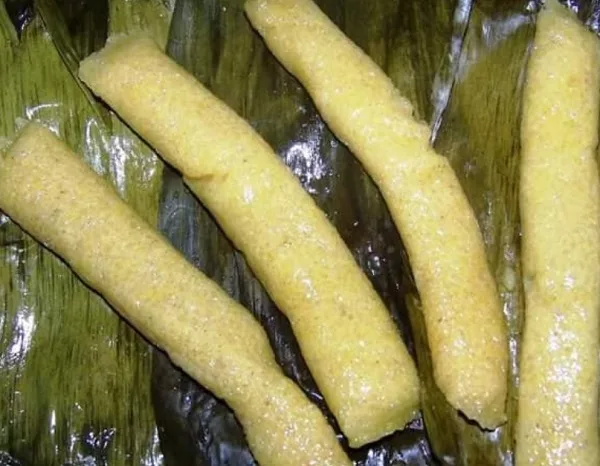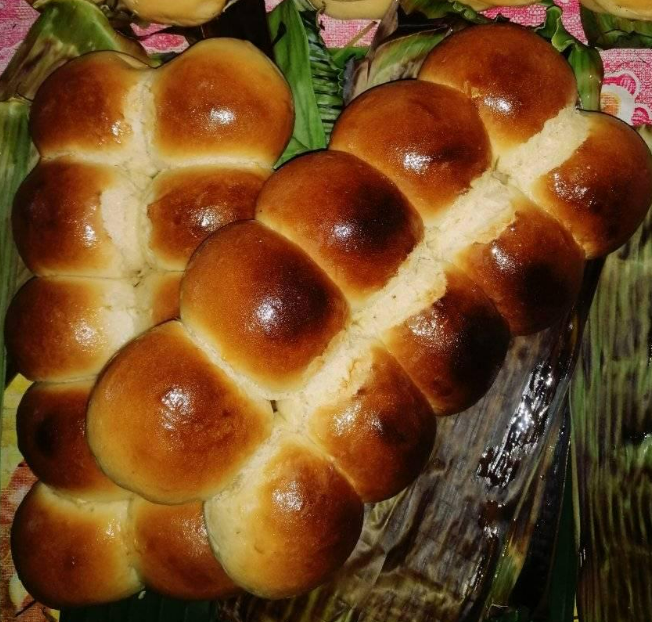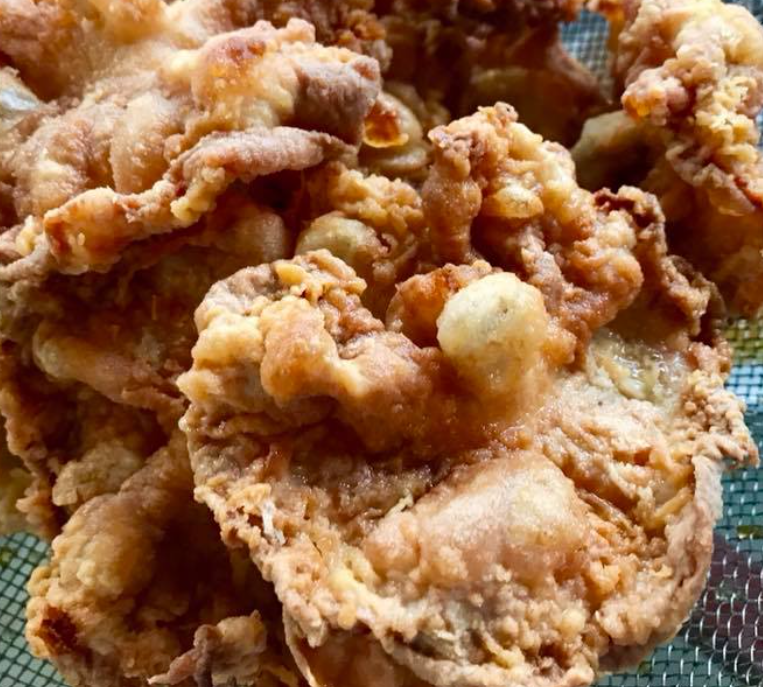
Dumaguete, a picturesque city nestled in the heart of the Visayas region of the Philippines, boasts a vibrant culinary scene that mirrors its rich cultural tapestry. Known affectionately as the “City of Gentle People,” Dumaguete has garnered a reputation not only for its warm hospitality but also for its diverse and delectable array of local delicacies. From savory street foods to intricate traditional dishes, the city’s cuisine is a delightful amalgamation of flavors and influences.
The culinary landscape of Dumaguete is deeply rooted in its history and the various cultures that have shaped it over the centuries. Spanish, Chinese, and indigenous Filipino influences converge in the kitchens of Dumaguete, creating a unique and tantalizing gastronomic experience. This cultural fusion is evident in the myriad of dishes that comprise the dumaguete delicacies list, each offering a taste of the city’s rich heritage and innovative spirit.
As you embark on this culinary journey, prepare to indulge in a spectrum of flavors and textures that define Dumaguete’s food culture. Whether it’s the sweet and savory blend of traditional Filipino desserts, the robust flavors of Spanish-inspired entrees, or the subtle nuances of Chinese culinary techniques, Dumaguete’s delicacies promise to be an unforgettable experience. This guide aims to provide you with an insider’s look into the must-try dishes that make Dumaguete a culinary gem in the Philippines.
Join us as we delve deeper into the heart of Dumaguete’s cuisine, exploring its most beloved dishes, the stories behind them, and the best places to savor these culinary delights. From bustling local markets to quaint eateries, every corner of Dumaguete offers a new flavor to discover and a new story to tell. Get ready to tantalize your taste buds and uncover the gastronomic treasures that this charming city has to offer.

Budbud Kabog: Dumaguete’s Signature Sticky Rice Delicacy
Budbud Kabog is a quintessential delicacy that embodies the rich culinary heritage of Dumaguete. This unique sticky rice treat is crafted from millet rather than the more common glutinous rice, lending it a distinct texture and flavor profile. The millet, known locally as ‘kabog,’ is combined with rich coconut milk and meticulously wrapped in banana leaves, which not only imparts a subtle fragrance but also enhances its visual appeal.
Tracing its origins back to the indigenous communities in the Visayas region, Budbud Kabog has been a staple in local festivities and daily life for centuries. The traditional preparation method involves soaking the millet overnight, then cooking it with coconut milk and a hint of salt until it reaches the desired consistency. This mixture is then spooned onto banana leaves, rolled into compact cylinders, and steamed to perfection. The result is a delightful blend of creamy, sweet, and slightly nutty flavors that are both comforting and satisfying.
Budbud Kabog holds a special place in Dumaguete’s cultural tapestry. It is often served during fiestas, religious celebrations, and family gatherings, symbolizing unity and sharing. This delicacy is not just a treat for the taste buds but also a representation of the region’s agricultural roots and communal spirit. Variations of Budbud Kabog may include ingredients like chocolate or fruit preserves, adding a modern twist to this traditional fare.
For those eager to experience the authentic taste of Budbud Kabog, several local markets and eateries in Dumaguete offer this delicacy. The Dumaguete Public Market and Sans Rival Cakes & Pastries are renowned for their exceptional versions of Budbud Kabog. Visitors can also find this sticky rice delight at various street vendors, particularly in the early morning when it is freshly made.
Exploring the dumaguete delicacies list is incomplete without savoring Budbud Kabog, a true reflection of the city’s culinary artistry and cultural heritage.
Silvanas: The Perfect Sweet Treat
One of the most iconic desserts in Dumaguete is the Silvanas. These delightful frozen cookies are a popular treat that has captured the hearts of both locals and visitors alike. Silvanas are composed of two main elements: a rich buttercream filling and crisp meringue wafers. The buttercream is sandwiched between the wafers, and the entire concoction is then coated in fine cookie crumbs, creating a unique texture and taste experience.
The texture of Silvanas is one of its most distinguishing characteristics. The outer layer of cookie crumbs provides a slight crunch, which gives way to the smooth, creamy buttercream filling. The meringue wafers add a delicate crispness that complements the other textures perfectly. The combination of these elements results in a dessert that is both indulgent and satisfying, making it a must-try on any Dumaguete delicacies list.
Flavor-wise, Silvanas are a harmonious blend of sweetness and richness. The buttercream filling is typically made with high-quality butter and sugar, which gives it a luscious, melt-in-your-mouth consistency. The meringue wafers add a light, airy quality that balances the richness of the buttercream. The cookie crumb coating imparts a subtle nuttiness, often enhanced with hints of vanilla or almond, adding depth to the overall flavor profile.
Experiencing Silvanas is a delight for the senses. Upon taking a bite, one is greeted with a satisfying crunch followed by the smooth, rich buttercream that dissolves effortlessly on the tongue. The layers of texture and flavor create a memorable culinary experience that lingers long after the last bite.
For those visiting Dumaguete, several local bakeries offer some of the best Silvanas in the area. Sans Rival Cakes and Pastries is perhaps the most famous, known for its authentic and delectable Silvanas. Another notable mention is the House of Silvanas, which offers a variety of flavors and is a favorite among locals. These bakeries have mastered the art of creating Silvanas, ensuring that each bite is a perfect blend of texture and taste.
Sans Rival, a distinctive and indulgent dessert, holds a special place in the culinary tapestry of Dumaguete. This delightful treat is characterized by its rich layers of buttercream, crispy meringue, and generously sprinkled chopped cashews. The dessert, whose name translates to “without rival” in French, truly lives up to its moniker, offering a unique gastronomic experience that is hard to match.
The origins of Sans Rival are rooted in the culinary exchanges between the Philippines and Europe during the colonial period. It is believed that the dessert was inspired by the French dacquoise, a similarly layered confection. However, through the years, Sans Rival has evolved into a distinctly Filipino creation, with its own unique preparation methods and ingredients that reflect local tastes and preferences.
The process of making Sans Rival is intricate and labor-intensive, requiring a careful balance of ingredients and precise baking techniques. The meringue layers are made from whipped egg whites and sugar, which are baked until crisp. These are then alternated with layers of rich buttercream, often flavored with vanilla or almond extract, and topped with a generous sprinkling of chopped cashews. The combination of textures—from the crunch of the meringue to the smoothness of the buttercream—creates a harmonious blend that delights the palate.
Dumaguete offers several renowned spots where one can savor this delectable dessert. Sans Rival Cakes and Pastries, a local institution, is perhaps the most famous place to indulge in Sans Rival. Established in the 1970s, this bakery has become a beloved fixture in the community, known for its consistently high-quality offerings. Another notable mention is Chantilly Cake House, which also serves a highly acclaimed version of this dessert.
For many locals, Sans Rival is more than just a treat; it is an integral part of celebrations. Whether it’s a birthday, wedding, or fiesta, this dessert often graces the tables, symbolizing joy and festivity. Anecdotes from Dumagueteños reveal that the dessert’s presence at gatherings is almost a tradition, with families passing down their own versions of the recipe through generations.

Pan de Bisaya: A Local Bread Staple
Pan de Bisaya is a beloved traditional bread in Dumaguete, renowned for its soft texture and slightly sweet flavor. This local delicacy is a staple in many households, often enjoyed as a snack or paired with a warm cup of coffee. The bread is made from simple ingredients, including flour, sugar, yeast, and milk, which come together to create its unique and comforting taste.
The process of making Pan de Bisaya begins with mixing the dough, which is left to rise until it doubles in size. Once the dough has risen, it is shaped into small, round rolls and baked until golden brown. The result is a soft, fluffy bread with a delicate sweetness that is hard to resist. This bread is often enjoyed fresh out of the oven, but it can also be toasted or served with butter and jam for a delightful treat.
Pan de Bisaya holds a special place in the hearts of locals and is deeply ingrained in the cultural fabric of Dumaguete. It is commonly found at family gatherings, celebrations, and even as an everyday snack. The bread’s popularity has led to a thriving market of bakeries and street vendors that specialize in this cherished delicacy.
Some of the most popular places to find Pan de Bisaya include the Dumaguete Public Market, where numerous vendors offer freshly baked bread daily. Local bakeries such as Sans Rival Cakes and Pastries and Lee Plaza also provide excellent versions of this traditional bread. Additionally, many street vendors throughout the city sell Pan de Bisaya, making it easily accessible to both residents and visitors alike.
Whether you are exploring the bustling markets or strolling through the streets of Dumaguete, the aroma of freshly baked Pan de Bisaya is sure to entice you. This delightful bread is an essential part of the Dumaguete delicacies list, offering a taste of the city’s rich culinary heritage.

Puto Maya and Sikwate: A Classic Pairing
In the heart of Dumaguete, the combination of Puto Maya and Sikwate stands as a testament to the city’s rich culinary heritage. Puto Maya, a traditional sticky rice cake, is crafted from glutinous rice, coconut milk, and ginger. This delicacy is often shaped into compact, pyramid-like forms and garnished with a sprinkling of sugar or a slice of ripe mango for added sweetness. On the other hand, Sikwate is a thick, rich Filipino hot chocolate made from locally sourced cacao, boiled with water, and sweetened to taste. This hot beverage is prepared using a wooden whisk called a batirol, which ensures a smooth and frothy consistency.
The pairing of Puto Maya and Sikwate is more than just a delightful breakfast combination; it is deeply rooted in Filipino culture and tradition. Historically, this duo has been served during festive occasions, family gatherings, and town fiestas, symbolizing warmth, hospitality, and a sense of community. The mild, creamy flavor of Puto Maya perfectly complements the robust, slightly bitter taste of Sikwate, creating a harmonious balance that is both comforting and satisfying.
For those eager to experience this classic pairing in Dumaguete, a visit to the local market is indispensable. The Dumaguete Public Market, in particular, offers an authentic taste of Puto Maya and Sikwate, where vendors prepare these items fresh daily. Another notable spot is the Painitan sa Tiangge, a popular breakfast haunt among locals, renowned for its traditional fare served in a convivial atmosphere. Additionally, Sans Rival Cakes & Pastries, while famous for its silvanas, also provides an excellent version of this beloved pairing, allowing visitors to indulge in the city’s culinary staples.
Whether enjoyed as a morning treat or a mid-afternoon snack, Puto Maya and Sikwate encapsulate the essence of Dumaguete’s gastronomic culture, offering a delightful glimpse into the region’s rich culinary traditions.

Kinilaw: A Fresh and Flavorful Seafood Dish
Kinilaw, often referred to as the Filipino cousin of ceviche, is a celebrated delicacy in Dumaguete, offering a refreshing and vibrant culinary experience. This dish is a testament to the rich marine bounty of the region, featuring the freshest seafood marinated in a tangy concoction of vinegar, lime juice, and an array of spices and herbs. The result is a dish that is both zesty and invigorating, perfect for seafood enthusiasts.
The traditional preparation of Kinilaw begins with selecting the freshest catch, typically fish like tanigue (Spanish mackerel), tuna, or even shrimp and squid. The seafood is then meticulously cleaned and sliced into bite-sized pieces. The marination process involves soaking these pieces in a mixture of native vinegar (such as tuba or coconut vinegar), calamansi (a local lime), and sometimes a hint of lemon juice. This acidic mixture not only imparts a bold flavor but also “cooks” the seafood, altering its texture to a tender yet firm consistency.
To elevate the taste, various spices and herbs are incorporated into the dish. Common additions include finely chopped ginger, onions, garlic, and chili peppers, which provide a spicy kick. Some variations might also include coconut milk, enhancing the dish with a creamy undertone. The combination of these ingredients creates a complex flavor profile—simultaneously tangy, spicy, and aromatic.
For those eager to savor authentic Kinilaw, Dumaguete boasts several renowned spots. Hayahay Treehouse Bar and View Deck offer a delightful ambiance and a highly praised version of Kinilaw. Another notable mention is Lab-as Seafood Restaurant, where the Kinilaw is celebrated for its freshness and perfectly balanced flavors. Additionally, the local public market, Dumaguete Public Market, provides an opportunity to experience Kinilaw in its most traditional form, often prepared by seasoned vendors who have perfected their recipes over generations.
Whether enjoyed as a starter or a main course, Kinilaw remains a must-try delicacy for anyone exploring the culinary landscape of Dumaguete. It encapsulates the essence of the region’s seafood heritage, presenting a dish that is as rich in history as it is in flavor.
Exploring Dumaguete’s Food Markets and Street Food Scene
Dumaguete, often referred to as the “City of Gentle People,” is not only known for its serene landscapes and friendly locals but also for its bustling food markets and vibrant street food scene. These culinary hubs offer an authentic taste of the city’s rich gastronomic culture, making them essential stops for any food enthusiast.
A visit to the Dumaguete Public Market is a must for those eager to dive into the local food culture. This market is a lively arena teeming with fresh produce, seafood, meats, and a plethora of other ingredients that define Dumaguete’s culinary identity. Wandering through the aisles, you’ll encounter vendors who are more than willing to share stories and cooking tips, enhancing your understanding of the local cuisine. The market is also a treasure trove of ready-to-eat delights, such as budbud kabog, a sweet sticky rice delicacy, and puto maya, a traditional rice cake often enjoyed with hot chocolate or ripe mangoes.
The street food scene in Dumaguete is equally compelling, offering a myriad of flavors that cater to every palate. Popular street food stalls can be found along Rizal Boulevard, where the aroma of grilling meats and frying snacks fills the air. Here, you can savor local favorites like balut, a fertilized duck egg considered a delicacy, and tempura, a deep-fried treat typically made from fish or shrimp. Another must-try is the dumaguete-style barbecue, known for its smoky, savory flavor and served with a side of tangy vinegar dip.
Exploring these food markets and street food stalls provides an immersive experience into Dumaguete’s culinary landscape. It’s an opportunity not just to taste but to connect with the local culture, engage with the vendors, and understand the stories behind each dish. Whether you are a seasoned foodie or a casual traveler, Dumaguete’s food markets and street food scene promise a delightful adventure that will leave you with lasting memories and a deeper appreciation for the city’s culinary heritage.
Giovanni Carlo P. Bagayas is a seasoned travel guide and passionate explorer from the Philippines. With years of experience uncovering the hidden gems of his homeland, Giovanni has dedicated his career to showcasing the beauty, culture, and adventure that the Philippines has to offer. As the author of Best Philippines Travel Guide, he combines his expertise and love for travel to provide insightful tips, detailed itineraries, and captivating stories for travelers seeking unforgettable experiences in the Philippines. Giovanni’s mission is to inspire wanderlust and help visitors discover the true essence of his vibrant country.

